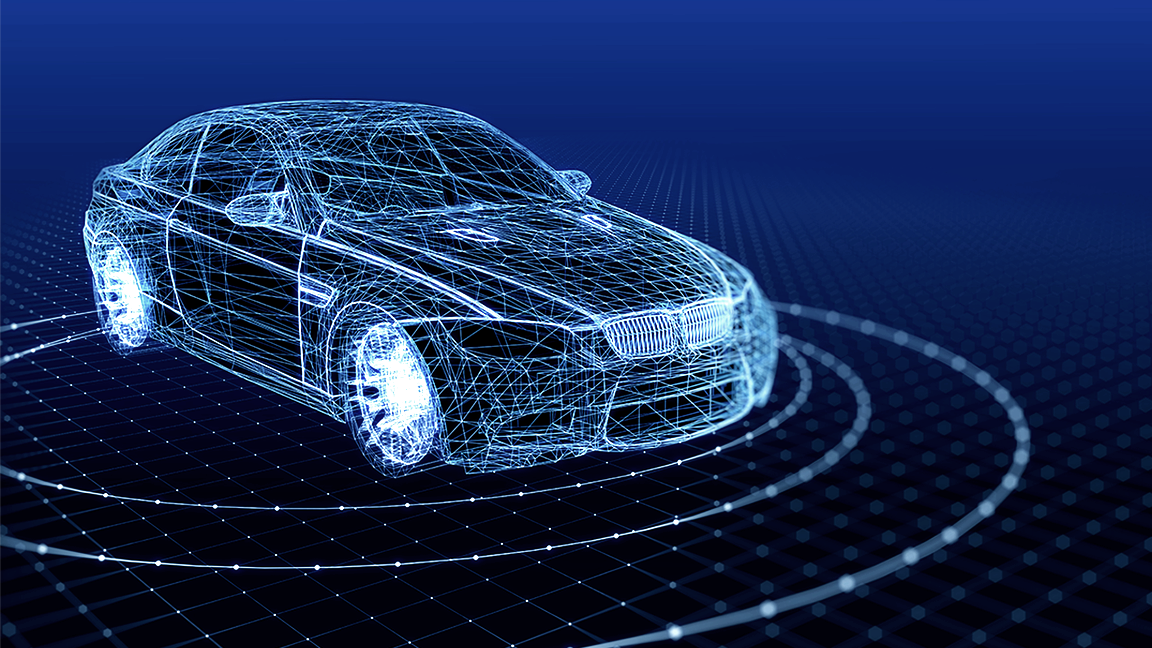LHP and Konrad Partner to Deliver New A³DAS Solution - 8 Takeaways
SME Interview Series: LHP and Konrad Technologies Partner on A³DAS Solution LHP’s Vice President of Marketing, Marty Muse, sat down with Steve...
Unlock Engineering Insights: Explore Our Technical Articles Now!
Discover a Wealth of Knowledge – Browse Our eBooks, Whitepapers, and More!
Stay Informed and Inspired – View Our Webinars and Videos Today!
Exploring the future of software-defined vehicles through expert insights.
8 min read
Ed Hodzen
:
Sep 22, 2021 3:35:50 PM

Every great endeavor starts with a plan. For autonomous mobility, that plan starts with defining the challenges to be solved, and the environments in which those challenges exist. There are many examples of challenging environments that autonomous mobility must conquer to be successful. For example:
These environments must be assessed, designed, constructed, simulated, tested, and perfected. They must not only fully support autonomous vehicle operation, but they must also safely accommodate a blend of autonomous vehicles and older non-autonomous vehicles. And they must accommodate a smooth transition as autonomous operation grows from the minority to most of the overall vehicular traffic.
Advancements will likely come in increments. They will come first where the operational design domain is limited, simply because the limited scope of variables will make it more manageable. As the technology grows in its capability, more domains will need to be defined, resolved, and become safely navigable. There is no shortage of work to be done. The timing is excellent for people that want to get into autonomous driving technology. There are a lot of spaces in which to innovate and improve, and the demand for talent far exceeds the supply.
We are unlikely to see a big differentiator in terms of autonomy versus the type of propulsion a particular system has. The two realms certainly impact each other; however, they remain on two parallel yet separate tracks. Advances in one realm will drive increased requirements in the other. Autonomous driving technology will have to transition smoothly as propulsion systems evolve from fossil fuels, through battery-based electric power, fuel cells, hydrogen power, and beyond. Likewise, the power requirements of the computational workloads for autonomous vehicle operation will have to be fulfilled by whatever technology is supplying the power, with capacity growing to meet the ever-increasing power demands of more advanced autonomous systems.
Examining the transitional period further, there does not appear to be an overriding challenge to integrating traditional power trains with autonomous technology. Many of the vehicles in the future will utilize what we now term as “alternative energies,” but they will probably be the norm by the time they become mainstream.
A key point of integration will be energy storage and refueling, whether that constitutes liquids, gasses, or electrons. Yes, battery electrics tend to be a little bit easier to integrate because there isn’t a starting mode, and you don’t have to fuel the vehicle in the traditional liquid sense. And potentially, you could implement wireless charging on a vehicle in a manner that can be handled automatically, which would aid autonomous operation at the beginning or end of a trip. In comparison, traditional fueling could be a little bit harder to automate, because of the risk of spills and other hazards. But generally, advancements in autonomous technology will remain a different lane from advancements in the type of propulsion. The evolution of the two must be tightly integrated, but they will remain separate technologies with their own unique challenges.
One big factor in the introduction of new technologies, is the high cost of investments that companies need to make to innovate on a marketable scale. If they're a small company and they don’t have a lot of assets, they're just not likely to take sweeping risks. In contrast, the government funds military projects to a high degree. They are willing to pay a lot of money to develop new technology, and they are willing to fail.
Many government-backed projects fail. Some fail spectacularly, and others simply spend money to chase down an idea until they learn enough to realize that it isn’t worth pursuing further. However, many of them also produce technologies that prove to be very useful. These particular breakthroughs wouldn't emerge if it wasn't for large government-backed investments, because the small companies just can't risk the high development costs. But once the military innovations are released into the public domain and declassified so they can be used in commercial applications, then the private sector can run with them and make improvements, reduce costs, and take them from possible to practical. Private industry is very good at adapting military technology and developing fresh new use cases that the technology wasn't originally designed for. So, this investment in the initial technology does spur a lot of new applications and some innovation, it’s just that most companies can't afford those big projects right at the birth of a technology.
Changes can be made through innovation or acquisition. Typically, large corporations conduct their own research and manage their own investment development. There are some innovators that are smaller companies that have formed startups based on other technologies or great ideas out of universities or private companies. And as these smaller entities become more capable and are displaying or proving technologies that are very valuable to autonomy, they get bought up by the big companies.
But it is going to be rare, where a really good idea grows into a big company itself. The larger companies will pay a lot of money to get the rights to a promising technology, if it is valuable in the autonomous space. It is going to be interesting to observe, but there probably won't be a lot of companies that go from the garage to a GM-sized corporation. That typically doesn't happen. You can see this trend in the electrification space; a lot of the battery companies or electronics companies get bought up by the auto companies and other companies that are interested in acquiring and controlling the technology. It is likely to be the same for autonomous technologies as well.

The challenges are going to be similar, in terms of automation. In some sense, I think aerospace automation will be easier. And of course, aerospace has been at least somewhat automated for many decades in terms of auto pilots that were able to take off and land aircraft. But keep in mind, they are two very different worlds.
Flight airspace is a tightly controlled but very large three-dimensional space, whereas the automotive land-based transportation systems are operating in a much more densely packed space on primarily two axes, within a less rigid regulatory environment. For air travel, the pilot of every aircraft must file a flight plan before taking off. Every flight is tracked, and every deviation from the plan is investigated.
With automotive transportation, there are signs and pavement markings and traffic rules that you must obey. But automobile operation is still largely based on the honor system; if you want to deviate from your plan at the spur of the moment, you can just do it. And if you deviate from the traffic rules, there may be consequences, but typically there are a limited number of physical barriers to doing so.
And that's the biggest deal when trying to leverage technology across aerospace and automotive, those different requirements. Obviously, the aircraft is a more complicated vehicle. It's more challenging in terms of the whole system, but it's got a well-defined operational domain in which it operates. You fly airport to airport at assigned altitudes along defined corridors, and there are no dogs or deer bursting into your path up in the air. And for the most part, it's nothing but air, lots of room for avoidance. Other aircraft, which are generally well-managed in terms of potential for collisions, are managed by air traffic control and the rules of the sky. It is a highly controlled space with lots of room.
In contrast, ground-based transportation is almost the opposite scenario. Typically, traffic only travels where there are roads. Escape paths are limited; if you must avoid a sudden hazard, you can only go left, right, slow down, or stop. If another vehicle is entering your path, it is often sudden, with little to no warning, and you only have the briefest of moments to react properly. There is no overarching network of controllers aiding you and managing other traffic.
It is debatable whether autonomous aircraft and autonomous vehicles cross over enough to provide the potential for mergers or reuse of their technologies and systems. Yes, some of the processes and procedures they use, such as understanding the reliability of systems, doing a very extensive reliability analysis to understand how things may fail, those kinds of methods are very valuable. The automotive industry can, and I think they are, learning from those methods. But as far as the technology itself? I see a gap in cost between the two, that is prohibitive to shared use.
The difference between what an aircraft company can pay for components, versus an automotive company, is significant. Aerospace tends to be a conservative business; they don't want planes falling out of the sky. So, they have advanced tech, but they don't change it that often. If it is proven technology and it works reliably, there's less motivation to have the latest thing. And so, aerospace typically does not advance as quickly as automotive.
In contrast, the automotive industry is a case study in continuous change. Automotive innovation has a rich history of innovating on an annual basis, introducing changes with each model year. Because the cost per vehicle is lower compared to aircraft, autos are less challenging to operate, and the operating environment is rich with traffic rules, defined roads, pavement markings, and consistent signage, a faster pace of innovation is not only achievable, but it is desirable to help drive sales.
That pace is accelerating now, growing faster and faster. A big car company would love to design one model, put its sole manufacture in place, and that's all they build. But if an auto manufacturer were to do that, history has shown us that they would soon be out of business. If they don't advance the technology and thus their real and perceived value in the marketplace, they're dead. It is different in aerospace, where consistency, reliability, and efficiency are desirable traits. The public’s perceptions are fickle: In aerospace, to innovate is to increase risk. In automotive, to innovate is to reduce risk. Perceptions, not data, become reality.
There is a huge motivation to advance in the land transportation automation space. However, the requirements of this realm are going to demand unique solutions. There might be some opportunities for cross-pollination between aerospace and automotive, but those opportunities are going to be far from plug-and-play.
Immediate industry workplace considerations aside, I haven't sensed much impact in that regard, in terms of decreasing the need for transportation. I think we've all kind of sensed that perhaps there is a decreased need for centralized buildings and expensive office space. But as far as autonomous mobility itself, and autonomous technology for vehicles and other machines… I don't get the sense that the pandemic has slowed those initiatives down.
Rather than slowing down, momentum could accelerate and swing in another direction if you wanted to have the ability to transport things safely without having to directly engage with other people or communities for health reasons. Autonomous mobility might be a technology that could help with that, more of a touchless interaction experience.
Autonomous mobility might help boost a shift towards more freight transportation and away from the movement of people, at least in the short term. Services like Amazon are more popular than ever before. And if more people are working remotely, that drives the necessity for more efficient shipping services, where you wouldn't have to personally go into the city to buy what you need, when you can just have it shipped to your door.
We have seen a dramatic growth in the logistics services to make that happen. In turn, this drives a greater need for the so-called last mile of the delivery, where you move product from a freight terminal and deliver it that last mile. Working upstream, this also includes the last 10 or 20 miles from the distribution centers, the portion of the journey that is not long haul. Autonomous mobility is a great fit for those systems, to make the last mile of delivery efficient and safe and capable.
That may be an area where autonomy is going to be achieved earlier, because the market demand will drive it. There would be high value in a delivery van that can deliver goods autonomously. However, there will be challenges in using the existing roads. There is a lot of variety in road conditions and terrain that an autonomous delivery van would have to successfully negotiate, such as dusty dirt and gravel country roads, poorly marked lanes, hilly terrain, and things like that. Presently, some of the current autonomous technology still relies heavily on clean pavement markings and other infrastructure cues to navigate. And the toughest part of all might be the last 30 feet, where the driver carries the package to the door.
All these challenges and more will have to be clearly defined, and then solved. Can it be done? Yes. Are there compelling reasons for doing so? Absolutely. Will we be better off with autonomous mobility and its accompanying functional safety playing a much greater role in our lives? There is no doubt.

SME Interview Series: LHP and Konrad Technologies Partner on A³DAS Solution LHP’s Vice President of Marketing, Marty Muse, sat down with Steve...

NI Drivven Powertrain Modules, Exclusively sold by LHPTS, an LHP division.